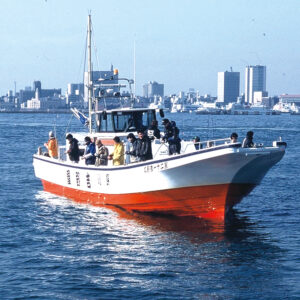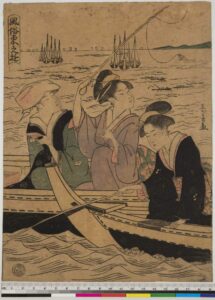Kansai as Destination for Fishing Trip in Japan
You may know city names such as Osaka and Kyoto, as wonderful sightseeing destinations. Kansai is the area which includes Osaka and Kyoto. Kansai has a lot of fishing locations on the Pacific ocean side, the Japan Sea side, and freshwater areas.
In this blog, I would like to introduce the places where you can go fishing in the Kansai region.
Introduction to Kansai
The Area of Kansai lies in the middle western Japan. And noticeably, it extends from the northern coast (facing the Japan sea) to the southern coast (facing the Pacific Ocean.)
In this area, Osaka and Kyoto are in the middle and people living around such big cities in Kansai can access the various waters.
Geographically, we can see seas around this region have a rich environment. On the Pacific side, warm Kuroshio Current hits the coast of Wakayama. In the west of the region, there is the Seto Inland Sea in front of Hyogo. This inland sea is blocked by Awaji Island, making the strong flow of water in the narrowed sea, on the north and the south end of the island. This island forms the calmer Osaka bay, where the Kansai International Airport lies.
On the region’s east and north, there are ria coasts, forming complex rocky coast lines. Most of them are remained untouched and have been rich places for various fish.
When you turn your eyes inland, you can easily notice the lake, located in Shiga prefecture. This is Japan's biggest lake, Biwako lake. In the middle of the peninsula, around Nara, there is a mountain of 1915 meter high, surrounded by mountains of 1300 meters peak elevation. And in the north of Hyogo and Kyoto Prefectures, there are clusters of peaks around 1000 to 1500 m. Thanks to Japan’s Humid subtropical climate, these mountains hold water forming the rivers.
Target fish in each area
There are various kinds of fishing possible in this region. Below, I pick up some of the special target fish in each area of this region.
In the Pacific ocean side, the most significant fish to show the character of the water is the billfish. There is a billfish trolling tournament held annually.
From the shore, rocky shore fishing (Iso fishing) is very popular in this area. This targets Gure (Large scale blackfish, called Mejina in eastern Japan.) This style of Iso fishing, called Fukase, is explained in my blog post.
Of course, there are other target fish with lures. From the shore, Blackfin seabass (Lateolabrax latus) is many enthusiasts' favorite, for its power and stamina nurtured in the current washed rocky coasts.
Going to the west of Kansai, bank anglers in the Seto Inland sea targets Black seabream (Acanthopagrus schlegelii,) Japanese jack mackerel (Trachurus japonicus,) and Japanese red seaperch (Sebastes inermis).
Anglers for Black seabream use one variation of fukase method, used for iso fishing.
Since Japanese jack mackerel and Japanese red seaperch can be fished with the same set of tackles and it is easier to go this ultra light fishing, this style of fishing attracts a lot of anglers.
Last but not least, in this area, is Red seabream (Pagrus major.) As some of you may know, this is the favorite fish among Japanese people (even to non anglers.) You can catch it with traditional boat fishing chumming rigs and with lure styles such as Tai rubber. The details of this lure is explained in my blog. We cannot forget the origin of Tai rubber is this region’s traditional lures.
Heading to the north of Kansai, you reach the Japan sea. One of the famous targets are squids, namely Bigfin reef squid (Sepioteuthis lessoniana) and Swordtip squid (Uroteuthis edulis.)
Bigfin reef squid are caught with special squid lure, called Egi. This style is explained in this blog of mine in detail.
While Bigfin reef squid is the target of shore fishing, Swordtip squid is of offshore fishing.
As well as the richness in saltwater fishing, what shines in freshwater is bass fishing.
Biwako lake, Japan’s biggest lake, is famous for the world record Largemouth bass. The record bass was 10.12kg (22.3 lb), caught on the 2nd of July, 2009.
Driven by the popularity of this biggest lake, the bass fishing around Kansai is very active compared to other areas in Japan. If you name a few other lakes for bass fishing in this region, you can say Nanairo dam and Aono dam.
As mentioned above, supported by the rich mountains, there are many rivers. For fishing, these rivers are famous for Ayu sweetfish and trout.
If you pick a few of the Ayu rivers, Kinokawa river in the south and Yuragawa river in the north. As the special technique to catch Ayu sweetfish and its taste, it keeps many enthusiasts enjoying it for decades.
For trout fishing, Cherry trout (Oncorhynchus masou ishikawae) are the popular native targets. Not only the land locked one can be a target, but there are opportunities to catch the descending ones.

